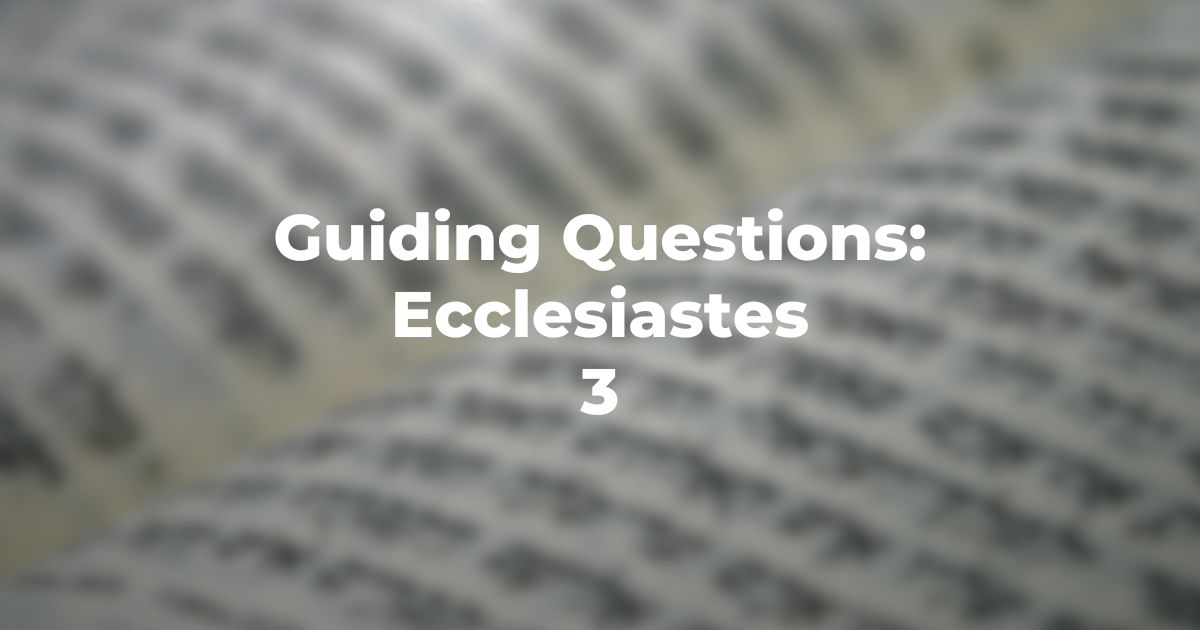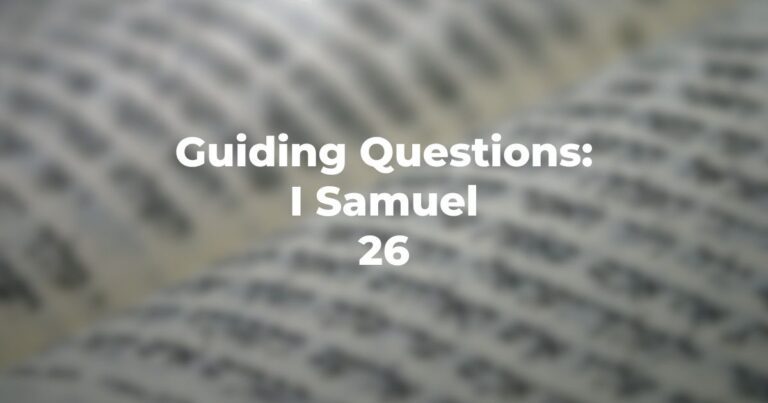- Ecclesiastes 3:1-15 have been called a “Catalogue of Seasons” or “Propitious Times for Action”. As you read through this section, does Kohelet leave any place for free will? For individual initiative? Is there any difference between the thoughts expressed here and the concept of predestination?
- How do you think Dr. Jack Kevorkian would react to the first stich of Ecclesiastes 3:2?
- What is meant by “throwing stones” in the first stich of Ecclesiastes 3:5. In what way does the clear allusion in the second stich of Ecclesiastes 3:5 shed light on the meaning of the first stich? Can you think of other euphemisms like this in contemporary English?
- According to Kohelet (Ecclesiastes 3:11) what is the essential contradiction that God has implanted in each human heart? (In Biblical usage, the heart is where the mind, intellect and reason reside. The liver is the location of human emotions.]
- What differences can you distinguish between the views of Kohelet (ex: Ecclesiastes 3:13) and the philosophy of hedonism?
- What reason does Kohelet give for God’s fixing all phenomena forever (Ecclesiastes 3:14)?
- Does God have any special concern for the pursued? (Ecclesiastes 3:15)
- What further evidence does he bring (Ecclesiastes 3:16-22) to prove that people should aim only to enjoy whatever they can, whenever the opportunity arises?
- What does Kohelet say about appearances and expectations in Ecclesiastes 3:16?
- Compare Ecclesiastes 3:17 and Ecclesiastes 3:19. Which verse sounds more authentically like the thought of Kohelet? Which verse might be a refutation of the other?
- Based on what we read here (Ecclesiastes 3:20-22) what would you conjecture is his concept of life after death? Is there any difference between the death of a human and the death of an animal?
- What does Kohelet conclude, once again, is the basic way a person should live? (Ecclesiastes 3:22)
Author
-

Exploring Judaism is the digital home for Conservative/Masorti Judaism, embracing the beauty and complexity of Judaism, and our personal search for meaning, learning, and connecting. Our goal is to create content based on three core framing: Meaning-Making (Why?), Practical Living (How?), and Explainers (What?).
View all posts




